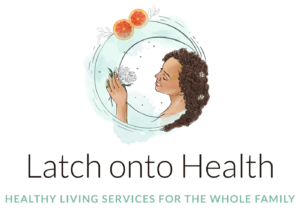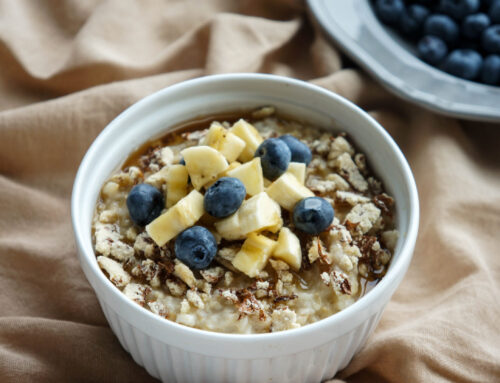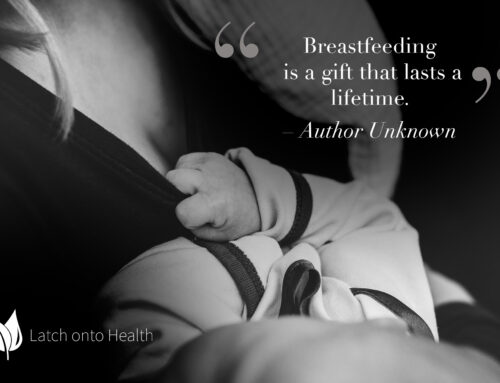Throughout pregnancy, mama’s body instinctually took care of baby’s every need. Post delivery, mom’s body can help nurture and nourish baby through nursing. Of course, as each baby and mama is unique so are their needs. The benefits to baby are as incredible as the milk a mama makes.
Liquid Gold
Breastmilk may be called liquid gold, but the term most accurately describes colostrum. Colostrum is thick, yellow milk that mama produces during pregnancy and after birth. Rich in antibodies, vitamins, minerals, and growth factors, this liquid gold helps build baby’s immune system and digestive system. (1) One, in particular, called secretory immunoglobulin A (SIgA) “coats the internal organs and lining of the digestive, respiratory and reproductive tracts… SIgA doesn’t let bacteria and pathogens get in through the gut,”(2) essentially protecting baby from the inside out!
For roughly five days baby gets colostrum while nursing. After this period, mom begins producing transitional milk. Transitional milk has a lighter hue than colostrum because it is substantially diluted to create a higher volume of milk to keep up with baby’s demand. With the perfect combination of fat, protein, sugar, and water, transitional milk can support baby’s development and immune system as they continue to grow. (3)
First Response
The first thing mom may do when baby is born is enjoy skin-to-skin contact and nurse. Research has shown that nursing soon after birth “leads to more readiness to breastfeed, an organized breastfeeding suckling pattern, and more success in exclusive and overall breastfeeding.” (4) Other studies have found that nursing can reduce the risk of asthma, obesity, allergies and type 2 diabetes. (5) The incidence of lower respiratory infections, ear infections, and eczema are also lower in breastfed babies. (3)
Of course, reducing the risk of disease and infection is incredible but what happens when baby gets sick? Baby will pass the pathogen through the breast while nursing, stimulating a response within the breast to create antibodies to send back through the milk to baby. (6) And if mom gets sick, antibodies will be passed through her milk to protect baby too! Breastmilk and nursing don’t just support baby through illness, but through their development as well. When baby nurses often due to a growth spurt, mama’s milk will become richer in protein and fat to support that growth. Seriously, the way mom’s milk responds to baby’s needs is pure magic.
Night Night
Breastmilk can change color, change composition during a feeding and even vary in flavor. It also changes from day to night! Evening and night breastmilk contains melatonin and a higher amount of protein and fats to help baby fall asleep more easily. Since a newborn cannot produce melatonin and doesn’t for many months, nursing helps provide the much-needed sleep-hormone for a cozy nights rest. Evening milk is also rich in amino acids that help promote serotonin synthesis including tryptophan, a precursor to serotonin. Mama’s night milk helps baby eventually produce and use serotonin which leads to better moods and better sleep. (7)
Reduce SIDs
Welcoming baby can be an exhilarating and stressful time. There are so many precautions to take to ensure baby remains healthy and happy. Concerning SIDs or Sudden Infant Death Syndrome, it is recommended to avoid soft bedding, put baby to sleep on their back and to share a bedroom for the first year. Nursing has also been found to reduce the risk of SIDs by 50% at all ages throughout infancy. (8) Though the reduction of SIDs is significant with both partial and exclusive breastfeeding during the first six months of life, the American Academy of Pediatrics and the World Health Organization recommend nursing until age 2. Just goes to show you, the magic of nursing goes far beyond the newborn stages!
Picture: mother feeding her son Henry at 2 years + 3 months at Savannah National Wildlife Refuge
(3) https://www.womenshealth.gov/breastfeeding/making-decision-breastfeed
(4) http://pediatrics.aappublications.org/content/early/2016/08/18/peds.2016-1889
(5) https://www.nichd.nih.gov/health/topics/breastfeeding/conditioninfo/benefits#f2
(6) http://milkgenomics.org/article/protective-cells-in-breast-milk-for-the-infant-and-the-mother/
(7) https://www.pinkymckay.com/5-important-facts-about-night-time-breastfeeds/
(8) http://pediatrics.aappublications.org/content/123/3/e406







Leave A Comment